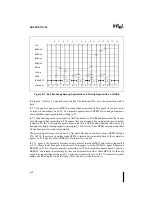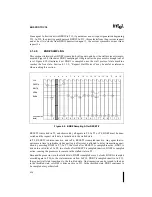
4-25
BUS PROTOCOL
For all transactions with LOCK# inactive, HITM# active guarantees in-order completion. Dur-
ing unlocked transactions, HITM# overrides the assertion of DEFER#.
If DEFER# is asserted during the Snoop Phase of a locked operation, the locked operation is pre-
maturely aborted. During the first transaction of a locked operation, if HITM# and DEFER# are
active together, the transaction completes with cache line writeback and implicit writeback re-
sponse, but the request agent must begin a new locked operation starting from a new Arbitration
Phase (BREQn# of the requesting agent must be deasserted if a symmetric agent issued the
locked operation). The assertion of DEFER# during the second or subsequent transaction of a
locked operation is a protocol violation. If DEFER# is asserted and HITM# is not asserted, a
Retry Response is driven in the Response Phase to force a retry of the entire locked operation.
4.4.3.2.
VALID SNOOP PHASE
The Snoop Phase for a transaction begins 4 clocks after ADS# is driven asserted or 3 clocks after
the snoop results of the previous transaction are driven, whichever is later.
4.4.3.3.
SNOOP PHASE STALL
A slow snooping agent can request a two-clock STALL in a valid Snoop Phase by activating both
HIT# and HITM#. In the case of a STALL, snoop results are sampled again 2 clocks after the
previous sample point. This process continues as long as the STALL state is sampled. When
stalling the bus, the stalling condition must be able to clear without requiring access to the bus.
4.4.3.4.
SNOOP PHASE COMPLETION
If no STALL is requested during the valid Snoop Phase, the Snoop Phase is completed in the
clock after the snoop results are driven.
4.4.3.5.
SNOOP RESULTS SAMPLING
Snoop Results are sampled during the valid snoop phase. Bus agents must ignore Snoop Results
in the clock after a valid sampling window.
4.5.
RESPONSE PHASE
4.5.1.
Response Phase Overview
A transaction enters the Response Phase when it is at the head of the In-order Queue. The agent
responsible for the response is referred to as the response agent. The agent decoded by the ad-
dress in the Request Phase determines the response agent for the transaction.
After completion of the Response Phase, the transaction is removed from the In-order Queue.
Summary of Contents for Pentium Pro Family
Page 17: ...1 Component Introduction ...
Page 26: ...2 Pentium Pro Processor Architecture Overview ...
Page 27: ......
Page 36: ...3 Bus Overview ...
Page 62: ...4 Bus Protocol ...
Page 105: ...5 Bus Transactions and Operations ...
Page 126: ...6 Range Registers ...
Page 131: ...7 Cache Protocol ...
Page 135: ...8 Data Integrity ...
Page 148: ...9 Configuration ...
Page 161: ...10 Pentium Pro Processor Test Access Port TAP ...
Page 172: ...11 Electrical Specifications ...
Page 201: ...12 GTL Interface Specification ...
Page 229: ...13 3 3V Tolerant Signal Quality Specifications ...
Page 233: ...14 Thermal Specifications ...
Page 239: ...15 Mechanical Specifications ...
Page 241: ...15 2 MECHANICAL SPECIFICATIONS s Figure 15 1 Package Dimensions Bottom View ...
Page 252: ...16 Tools ...
Page 260: ...16 8 TOOLS Figure 16 4 Generic MP System Layout for Debug Port Connection ...
Page 264: ...17 OverDrive Processor Socket Specification ...
Page 290: ...A Signals Reference ...
Page 320: ...Index ...
Page 328: ......
















































